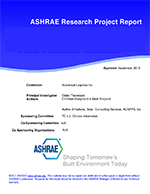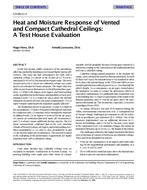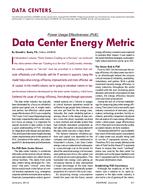The aerodynamics of a building must be considered in selecting the location of the release point for laboratory exhaust. Releases too low may be entrained by the highly turbulent flow region and result in high concentrations on the building surface where building air intakes are located. Higher releases may result in high concentrations at ground level downwind of the building. Concentration measurements from a wind-tunnel study for several release locations above each of four rectangular buildings are presented and compared with some previous measurements and formulas. Both surface and ground-level values are presented. The ground-level concentrations are used to compute “building amplification factors”, which are defined as the ratio of the maximum concentrations from a source above the building to the maximum observed from the same source in the absence of the building. This simple measure of the influence of the building on the ground-level concentration showed the influence of the building to extend well above the building cavity.
KEYWORDS: content, air pollution, outdoor, indoor, roofs, laboratories, exhaust gases, wind tunnels, measuring, aerodynamics, buildings, turbulent flow, air inlets, flues
Citation: Symposium, ASHRAE Trans. 1991, vol.97, part 2
Product Details
- Published:
- 1991
- File Size:
- 1 file , 1 MB
- Product Code(s):
- D-18143


